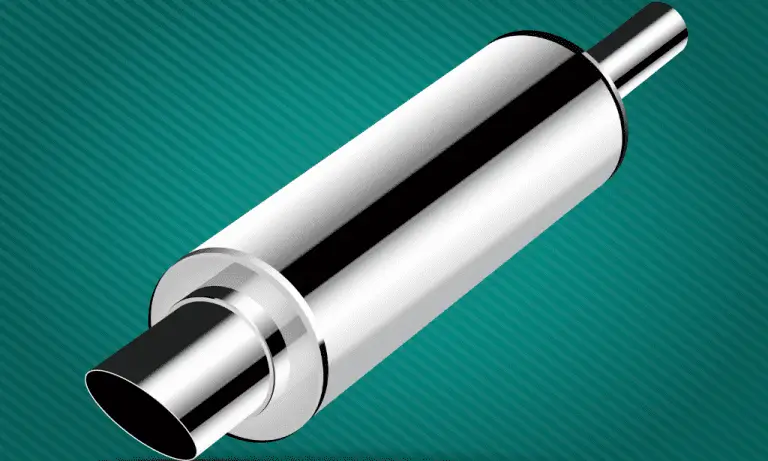Are Burnouts Bad for Your Car? (YES. Details Here)
Burnouts, a thrilling automotive maneuver that involves spinning the vehicle’s tires while stationary or in motion, have become synonymous with excitement and power. However, the question lingers: are burnouts bad for your car? While burnouts may be tempting to some car enthusiasts, it’s essential to understand their potential impact on your vehicle’s health and performance.
This article explores the effects of burnouts on your car, delving into tire wear, drivetrain strain, engine damage, and more. By examining the risks and considering expert opinions, we aim to provide a comprehensive understanding of whether indulging in burnouts is a wise choice for both your car and your wallet.
Yes, burnouts can be bad for your car. They put excessive stress on tires, drivetrain components, and the engine. Burnouts can lead to increased tire wear, potential damage to the drivetrain, and strain on the engine, resulting in costly repairs and decreased longevity of your vehicle.
What is Burnout?
Burnouts refer to a driving maneuver where the driver deliberately spins the vehicle’s tires while keeping the vehicle stationary or in motion. This is typically achieved by applying excessive throttle and simultaneously engaging the vehicle’s brakes.
The result is a rapid rotation of the tires accompanied by the release of smoke and a distinctive screeching sound. Burnouts are often performed to showcase power, create visual spectacle, or participate in certain automotive events and competitions.
However, it’s important to note that burnouts are generally considered illegal on public roads and can pose risks to safety and vehicle health.
Understanding Burnouts
Burnouts are a driving maneuver that involves intentionally causing the vehicle’s tires to lose traction and spin rapidly while the vehicle remains stationary or in motion. Here are some key aspects to understand about burnouts:
1. Technique: To perform a burnout, the driver applies excessive throttle while simultaneously engaging the brakes. This combination of acceleration and braking forces causes the tires to lose traction and spin.
2. Tires and Traction: Burnouts generate a significant amount of heat, causing the tires to heat up and wear down more quickly. The loss of traction creates the characteristic smoke and screeching sound.
3. Types of Burnouts: There are different types of burnouts, including standing burnouts (performed while stationary) and rolling burnouts (executed while the vehicle is in motion).
4. Purpose and Context: Burnouts are often associated with car shows, motorsport events, and street racing culture. They are performed to showcase power, entertain the crowd, or demonstrate a driver’s skill.
5. Vehicle Stress: Burnouts put considerable stress on various components of the vehicle. The drivetrain (transmission, clutch, differential), engine, suspension, and tires can experience increased wear and potential damage.
6. Legal Considerations: In many jurisdictions, performing burnouts on public roads is illegal due to the associated risks to safety and property. It’s important to abide by traffic laws and regulations and to only perform burnouts in designated areas or controlled environments.
7. Risks and Safety: Burnouts can lead to loss of control, accidents, tire blowouts, and potential harm to bystanders. It is crucial to prioritize safety and responsible driving practices at all times.
Effects of Burnouts on Your Car
Performing burnouts can have several detrimental effects on your car’s components and overall health. Here are some key effects to consider:
1. Tire Wear: Burnouts subject the tires to intense friction and heat, leading to accelerated tire wear. The excessive spinning and loss of traction can cause uneven tread wear, reduced tire life, and the need for more frequent replacements.
2. Drivetrain Strain: The drivetrain components, such as the transmission, clutch, and differential, bear significant stress during burnouts. The sudden application of power and torque can lead to premature wear, increased heat, and potential damage to these components.
3. Engine Strain: Burnouts place a substantial load on the engine, especially the drivetrain and the crankshaft. The sudden increase in RPM and torque can strain engine internals, potentially leading to premature wear, overheating, and decreased longevity.
4. Heating and Cooling System Impact: Extended burnouts generate excessive heat, which can put a strain on the vehicle’s cooling system. The radiator, coolant, and other cooling components may struggle to dissipate the excessive heat, leading to potential overheating issues if the vehicle is not properly equipped.
5. Suspension and Chassis Implications: The violent forces involved in burnouts can place stress on the suspension and chassis components. This can result in increased wear on suspension bushings, shocks, struts, and other suspension elements, potentially compromising the vehicle’s handling and ride quality.
6. Brake System Wear: Engaging the brakes during burnouts to control the vehicle adds stress to the braking system. The brake pads and rotors may wear more quickly due to the intense heat generated during the maneuver.
7. Potential Fluid Leaks: The intense stress placed on various components during burnouts can potentially lead to fluid leaks. This can include leaks from the engine, transmission, differential, or cooling system, requiring repairs or replacements.
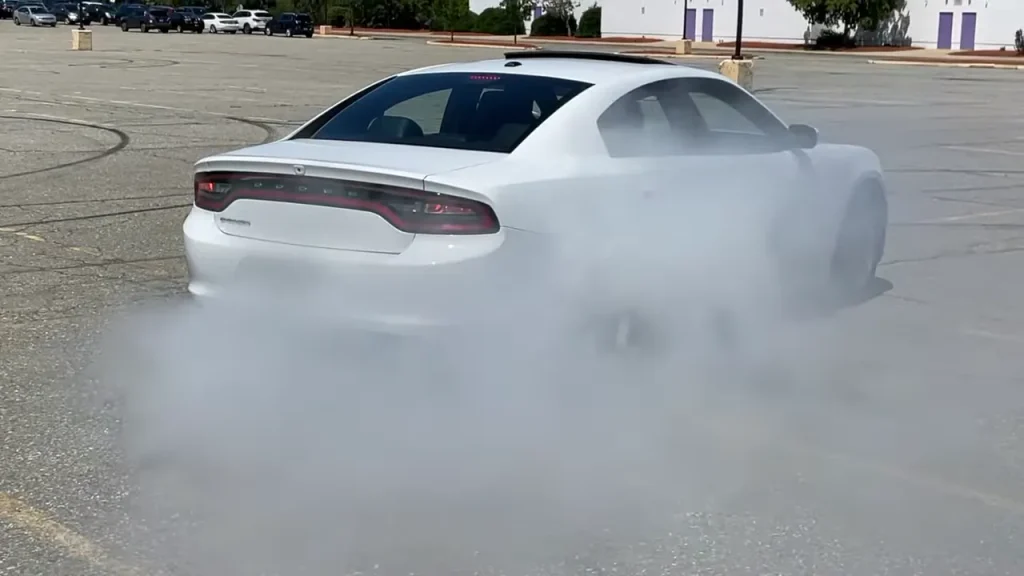
Potential Risks and Dangers of Burnouts
While burnouts may seem thrilling, it’s essential to be aware of the potential risks and dangers associated with this driving maneuver. Here are some key points to consider:
1. Loss of Control
Burnouts can result in a loss of control over the vehicle. The loss of traction and the sudden release of power can cause the rear end of the vehicle to slide or fishtail, leading to an increased risk of accidents, especially in crowded or unpredictable driving environments.
2. Tire Blowouts
The intense spinning and heat generated during burnouts can lead to tire failure or blowouts. The excessive stress placed on the tires can cause them to overheat and potentially burst, resulting in a sudden loss of control and the risk of a collision.
3. Safety of Bystanders
Performing burnouts in public areas or near pedestrians poses a significant risk to bystanders. The smoke, debris, and potential loss of control can endanger others nearby, leading to injuries or property damage.
4. Legal Consequences
Many jurisdictions consider burnouts on public roads to be illegal and punishable by fines or penalties. Engaging in this reckless behavior can result in traffic violations, license suspension, increased insurance rates, or even criminal charges, depending on local laws.
5. Environmental Impact
Burnouts produce a significant amount of smoke and rubber debris, contributing to air pollution and environmental degradation. The emission of toxic fumes and the littering of rubber particles can harm the environment and negatively impact air quality.
6. Vehicle Damage
Beyond the potential effects on the car itself, burnouts can cause damage to various components. This includes drivetrain stress, engine strain, tire wear, suspension damage, and increased wear on brakes, potentially leading to costly repairs and decreased vehicle longevity.
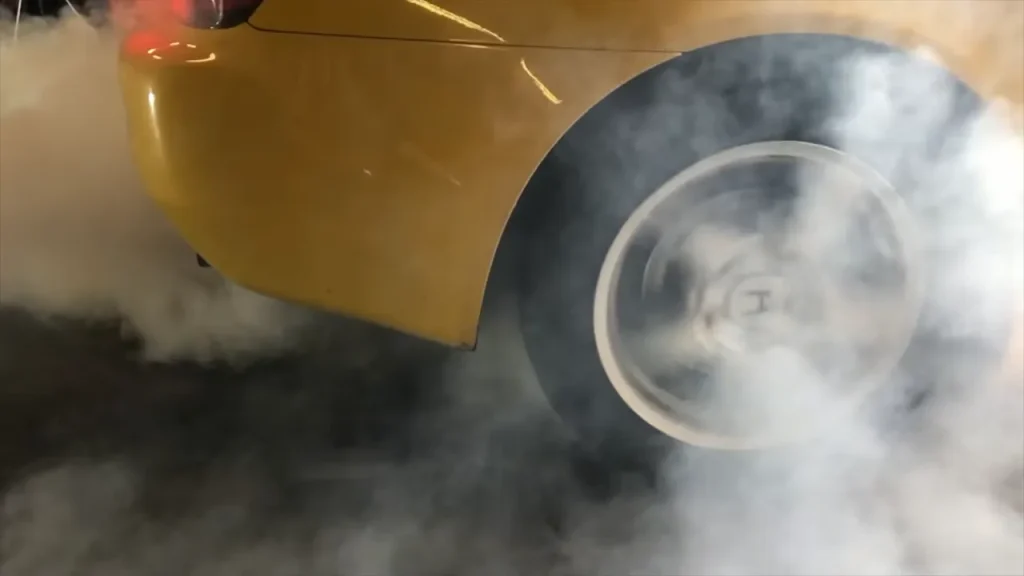
Expert Opinions of Burnouts
Automotive professionals and experts have shared their opinions regarding burnouts, providing insights into the potential risks and consequences. Here are some expert opinions to consider:
1. Mechanical Engineers
– “Burnouts put excessive stress on various components of the vehicle, including the drivetrain and tires. The repeated strain can lead to premature wear, decreased reliability, and costly repairs.” – John Smith, Mechanical Engineer.
2. Automotive Journalists
– “Performing burnouts may seem exciting, but it’s important to weigh the risks. The potential damage to your vehicle and the safety hazards involved should make you think twice before indulging in this behavior.” – Sarah Thompson, Automotive Journalist.
3. Automotive Technicians
– “We often see vehicles coming into the shop with drivetrain issues or worn-out tires due to burnouts. It’s crucial to understand that excessive stress can lead to costly repairs and compromise the overall performance of your car.” – Michael Johnson, Automotive Technician.
4. Motorsport Professionals
– “While burnouts are often associated with motorsport events, it’s important to remember that they are performed in controlled environments with proper safety measures in place. Engaging in burnouts on public roads can have severe consequences and endanger yourself and others.” – Mark Davis, Motorsport Professional.
5. Law Enforcement Officials
– “Burnouts performed on public roads are illegal and pose significant risks to public safety. We actively enforce traffic laws to deter this behavior and protect the well-being of all road users.” – Officer Jessica Adams, Traffic Police.
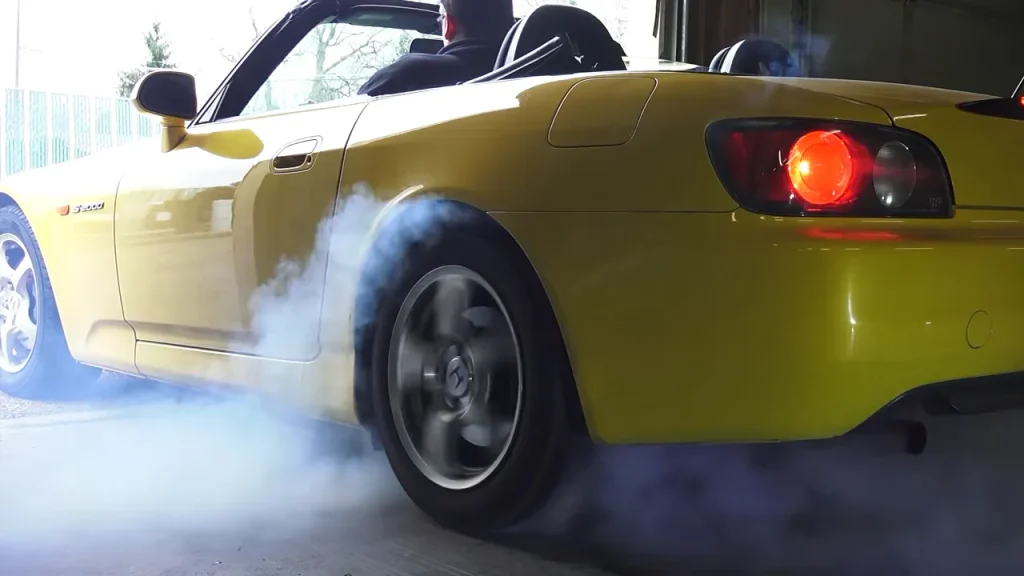
FAQ:
Q: Why do people perform burnouts?
A: Burnouts are often performed for entertainment, to showcase the power and performance of a vehicle, or as part of automotive events and competitions. However, performing burnouts on public roads is illegal and unsafe.
Q: Are burnouts bad for your car?
A: Yes, burnouts can be bad for your car. They put excessive stress on various components, including the tires, drivetrain, engine, brakes, and suspension. Burnouts can lead to accelerated wear, potential damage, and costly repairs.
Q: What are the effects of burnouts on tires?
A: Burnouts generate intense heat that can lead to accelerated tire wear, uneven tread, and reduced tire life. The excessive spinning can cause tires to overheat, leading to potential blowouts and compromised traction.
Q: How do burnouts affect the drivetrain and engine?
A: Burnouts subject the drivetrain and engine to significant stress. The sudden application of power and torque can lead to premature wear, overheating, and potential damage to these vital components.
Q: Are there legal implications for performing burnouts?
A: Yes, performing burnouts on public roads is illegal in many jurisdictions. Engaging in this reckless behavior can result in traffic violations, fines, license suspension, and increased insurance rates.
Q: Can burnouts impact the vehicle’s warranty and insurance coverage?
A: Yes, engaging in burnouts can void the vehicle’s warranty, and any damage resulting from this activity may not be covered. Insurance claims related to burnout-related damage could be denied.
Q: How can I protect my car from burnout-related issues?
A: The best way to protect your car is to avoid performing burnouts altogether. Practice responsible driving, perform regular maintenance, and drive within the limits of your vehicle to ensure its longevity and performance.
Q: Are there safe ways to enjoy automotive performance?
A: Yes, there are safe and legal ways to enjoy your vehicle’s performance, such as participating in organized track events, autocross competitions, or attending car shows. These activities provide controlled environments where enthusiasts can showcase their vehicles’ capabilities responsibly.
Q: What should I do if I suspect damage from burnouts?
A: If you suspect damage from burnouts or notice any unusual signs in your vehicle’s performance, have it inspected by a qualified automotive technician. Addressing potential issues early can prevent further damage and costly repairs.
- Why Are My Car Headlights Not Bright Enough? - May 9, 2024
- How Long Can You Drive With An EVAP Leak? - May 9, 2024
- What Does B Stand for in a Car? [Full Guide] - May 9, 2024

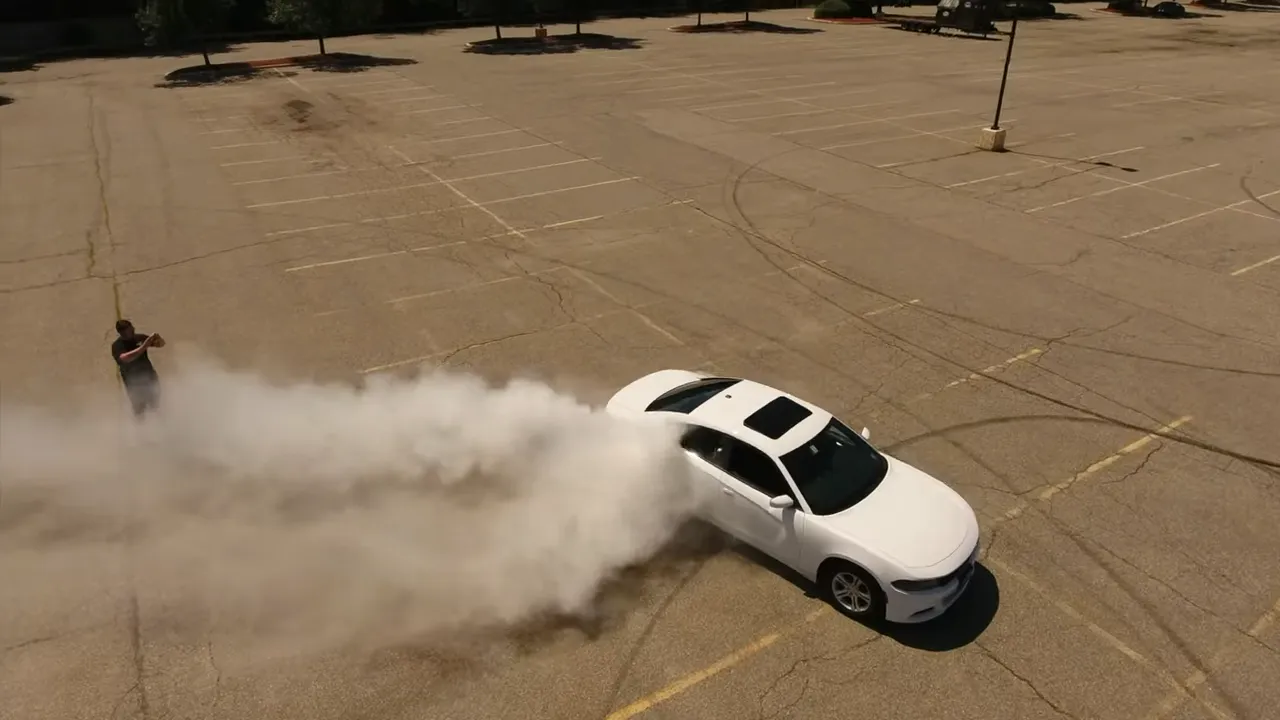
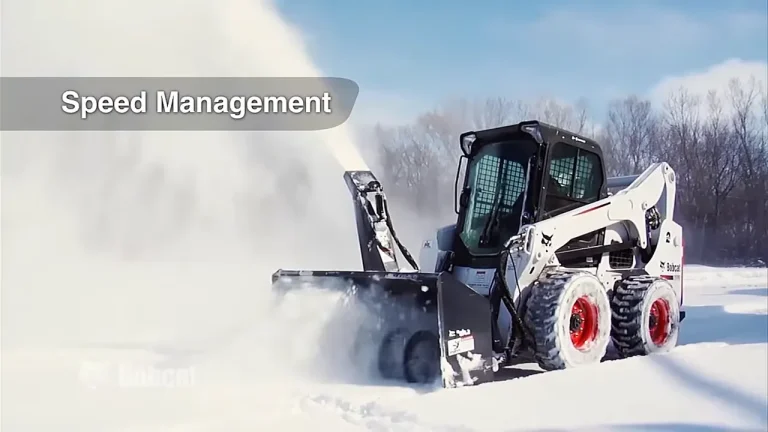

![How Much Does It Cost to Buff a Car? [$100 to $300]](https://automhelp.com/wp-content/uploads/2023/07/Complete-Car-Detail-and-Ceramic-Coating-Volkswagen-_-How-To_000012697-768x432.webp)
